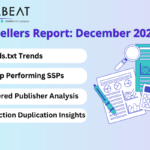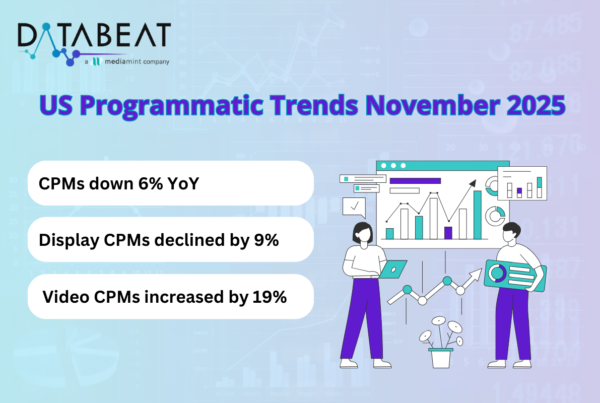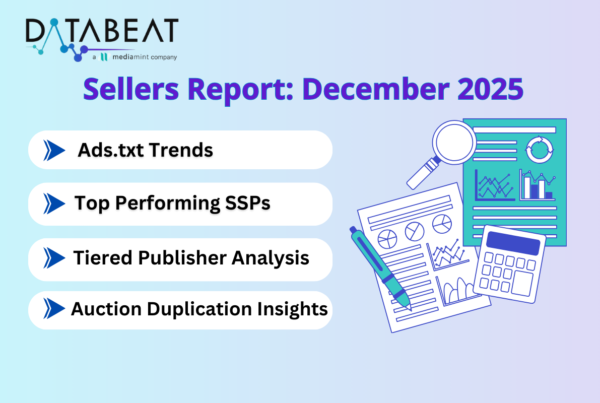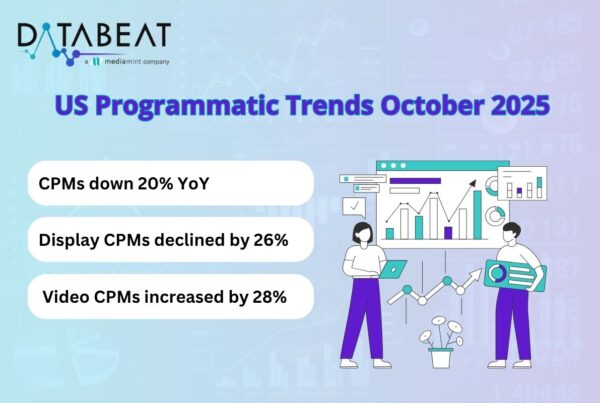
Date & Time – 18 July 2024, 1PM EST (Thursday)
Navigating the Post-Cookie Era: Insights for Publishers and Advertisers
As the digital advertising landscape transitions away from third-party cookies, both publishers and advertisers face a mix of opportunities and challenges. Our recent webinar delved into these shifts, offering valuable insights into how the industry can adapt and innovate. Here’s an overview of the key discussion points, summaries, and takeaways from the session:
Topics of discussion
1. Impact of Cookie Deprecation Across Browsers
2. Challenges and Evolving Identity Mechanisms
3. The Opportunity for Publishers
4. Performance of Identity Solutions and their Impact
5. Challenges in Match Rate
6. Long-Term Relevance and Compliance of Alternative Solutions
7. Contextual Advertising
8. Future Performance Trends
9. Challenges in Ad targeting and Measurement
1. Impact of Cookie Deprecation Across Browsers
Discussion Point: Analyzing performance variations in a cookie-free environment across different browsers.
Summary: The early concerns about performance drops, particularly on Safari, have evolved. Historically, CPMs (cost per thousand impressions) on Safari were significantly lower than on Chrome. Recent data now shows that Chrome performs better without cookies, with CPMs around 65 cents per dollar compared to Safari’s 40 cents. Despite some potential revenue drops, advancements in technology are improving performance metrics.
Takeaways:
- Monitor and adapt to changing performance metrics across browsers.
- Leverage technological advancements to mitigate revenue impacts.
2. Challenges and Evolving Identity Mechanisms
Discussion Point: Addressing the challenges and potential solutions as we transition away from cookies and Exploring new identity solutions emerging in response to the deprecation of cookies.
Summary: Key challenges include:
- Privacy and Consent: Maintaining user consent and a privacy-first approach.
- Authentication-Based Solutions: Enhancing identity resolution through user authentication.
- Consent Management: Crafting strategies to ensure compliance with global regulations.
Takeaways:
- Prioritize user consent and transparent privacy practices.
- Invest in authentication and consent management to comply with regulations.
- Overcome technical and data management challenges through innovative solutions and tools.
3. The Opportunity for Publishers
Discussion Point: The move away from cookies provides a chance for publishers to rethink and enhance their digital publishing strategies.
Summary: Originally, cookies were introduced to assist publishers with identity management but were later utilized by advertisers for tracking purposes. This shift presents publishers with an opportunity to redefine identity mechanisms in a manner that benefits both publishers and advertisers. This period of transition emphasizes the importance of industry-wide collaboration to develop effective new strategies.
Takeaways:
- Embrace this moment to innovate and refine identity strategies.
- Collaborate with industry peers to find mutually beneficial solutions.
4. Performance of Identity Solutions and their Impact
Discussion Point: Assessing the effectiveness of new identity solutions in different environments.
Summary: Current performance metrics show:
- Safari: A 30% performance uplift with identity solutions.
- Chrome: A 21% uplift with identity solutions.
The shift away from cookies has led to improved performance metrics and spurred investment in reaching previously non-addressable audiences.
Takeaways:
- Utilize new identity solutions to enhance performance metrics.
- Focus on strategies to reach previously non-addressable audiences.
5. Challenges in Match Rate
Discussion Point: Addressing ongoing challenges with match rates in new identity solutions.
Summary: Average match rates are around 40%, with gradual improvements. However, there are still significant gaps in addressability, especially in cookie-less environments like Safari and Chrome.
Takeaways:
- Aim to improve match rates and addressability.
- Address existing gaps to enhance overall performance.
6. Long-Term Relevance and Compliance of Alternative Solutions
Discussion Point: Evaluating the long-term sustainability and compliance of alternative identity solutions.
Summary: There is uncertainty regarding the long-term viability and compliance of current solutions. The legal framework for alternatives like IP-based tracking is still evolving, potentially leading to compliance issues. If advertisers do not see added value from these IDs over time, their interest might wane
Takeaways:
- Stay informed about the long-term relevance and compliance of alternative solutions.
- Adapt to regulatory changes as they evolve.
7. Contextual Advertising
Discussion Point: How Contextual targeting is going to play an important role in the Cookieless environment.
Summary: The move away from cookies allows for a rethinking of identity from various perspectives, including consumer preferences and cross-platform measurement. The industry is also exploring new ways to combine contextual advertising with identity solutions.
Takeaways:
- Explore innovative approaches by combining contextual advertising with identity solutions.
8. Future Performance Trends
Discussion Point: Anticipating performance differences between Chrome and Safari without cookies in the coming year.
Summary: As advertisers invest in alternatives, the performance gap between Chrome and Safari without cookies may narrow. There are also opportunities to better engage Safari users.
Takeaways:
- Prepare for a narrowing performance gap between browsers.
- Explore effective strategies to engage Safari users.
9. Challenges in Ad targeting and Measurement
Discussion Point: The role of identifiers in measuring performance and addressing challenges in ad targeting.
Summary: Identifiers are crucial for frequency capping, attribution modeling, and measuring brand lift metrics. Without identifiers, tracking ad frequency and measuring brand impact becomes complex, particularly across multiple touchpoints and platforms.
Takeaways:
- Ensure the use of identifiers for effective performance measurement.
- Address challenges in tracking and measurement with advanced solutions.
As the digital advertising industry continues to evolve, adapting to new identity solutions and performance metrics will be crucial. By embracing innovation, addressing challenges, and fostering collaboration, stakeholders can successfully navigate the post-cookie era. For more insights and updates, follow our blog and participate in future discussions.









